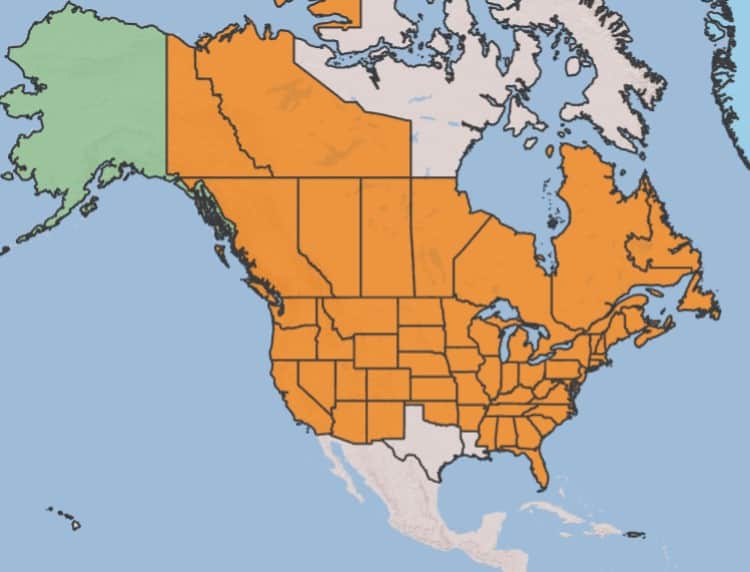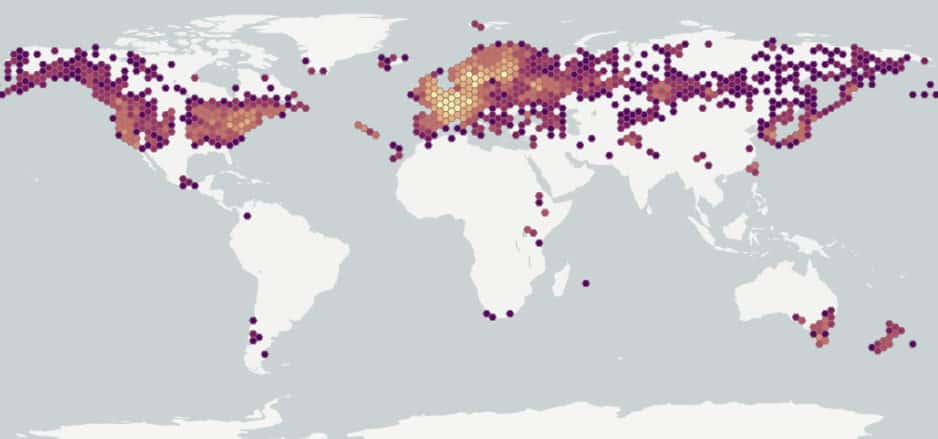Barbarea
Explore More :
Explore plus :
Overview
Aperçu
Regulation :
Remarques Réglementation:
- CFIA Weed Seeds Order - Class 3: Secondary Noxious Weed Seeds
Regulation Notes:
Distribution :
Répartition :
The Barbarea genus contains about 20 species with the majority distributed in the temperate regions of Eurasia and North America, and a few species in subtropical regions of East Asia and Australia (Agerbirk et al. 2003). B. vulgaris, a common species, has a wide native distribution area in Eurasia, and is introduced as a noxious weed in North America, Africa, Australia and New Zealand (MacDonald and Cavers 1991; Agerbirk et al. 2003). Four Barbarea species are found in Canada, distributed across all provinces and territories (Brouillet et al. 2010+). The native species B. orthoceras occurs across Canada except in Nova Scotia, while the introduced species occur as follows: B. stricta in Ontario and Quebec, B. verna in British Columbia and Newfoundland, and B. vulgaris in all Canadian provinces but not the territories.
Habitat and Crop Association :
Habitat et Cultures Associées :
Barbarea species grow in cultivated fields, gardens, pastures, meadows, old fields, shores and swamps, roadsides and disturbed areas (Darbyshire 2003). B. vulgaris is an important weed of small-seeded grain and hay crops in Canada, legume-grass meadows in the U.S. and vegetable and fruit crops in Europe (MacDonald and Cavers 1991).
Economic Use, cultivation area, and Weed Association :
Utilisation économique, zone de culture et association de mauvaises herbes :
Duration of Life Cycle :
Durée du cycle vital:
Biennial or perennial
Dispersal Unit Type :
Type d’unité de dispersion :
Seed
General Information
RENSEIGNEMENTS GÉNÉRAUX
Barbarea species produces abundant seed early in the growing season and behaves as an early spring dominant. Seeds may be spread as contaminants in seed lots of Phleum pratense (timothy) and other similar sized grains; they may also be spread in hay and manure, and have been shown to remain viable after passing through a variety of animals.
Individual plants may produce up to 88,000 seeds per plant, and seeds may remain dormant in the soil for 10-20 years. It can also reproduce vegetatively from roots close to the soil surface and buds from the base or stalks of the plant (MacDonald and Cavers 1991).
.Identification
Identification
-
Silique
Size
- Barbarea vulgaris silique length*: 15.0 – 30.0 mm; width: 1.2 – 2.0 mm
- Barbarea verna silique length*: 53.0 – 70.0 mm; width: 1.5 – 2.0 mm
- Barbarea stricta silique length*: 18.0 – 28.0 mm; width: 1.0 – 1.5 mm
- Barbarea orthoceras silique length*: 31.0 – 40.0 mm; width: 1.5 – 2.0 mm
* Silique size from FNA 1993+
Shape
- Siliques are generally linear, terete in 3 dimensions with a few transverse constrictions
- B. stricta and B. orthoceras siliques can be 4-angled in 3 dimensions
Surface Texture
- Siliques are smooth textured
Colour
- Siliques are dull straw yellow when mature
Other Features
- A persistent style remnant at one end of the silique can range from 0.2 – 3.0 mm long (FNA 1993+)
- Siliques are shiny green when immature
-
Seed
Size
- Barbarea vulgaris seed length*: 1.2 – 1.5 mm; width: 1.0 – 1.2 mm
- Barbarea verna seed length*: 1.8 – 2.5 mm; width: 1.4 – 1.6 mm
- Barbarea stricta seed length*: 0.8 – 1.5 mm; width: 0.5 – 1.0 mm
- Barbarea orthoceras seed length*: 1.2 – 1.5 mm; width: 0.9 – 1.0 mm
* Seed size from FNA 1993+
Shape
- Barbarea species seeds are oval or oblong shaped, compressed in 3 dimensions
- In edge view, the seed is thicker in the middle than the ends
Surface Texture
- Barbarea species seed surface is reticulate with deeply concave cells, generally obscured by a thin layer of tissue
Colour
- Barbarea species seed surface is shiny black; appears greyish brown from a surface layer of yellowish coloured tissue
Other Features
Hilum & Hilum area
- The hilum is in a notch at one end of the seed
- A furrow extends part of the way along the seed from the hilum area to the middle of the seed, separating cotyledons from the radicle
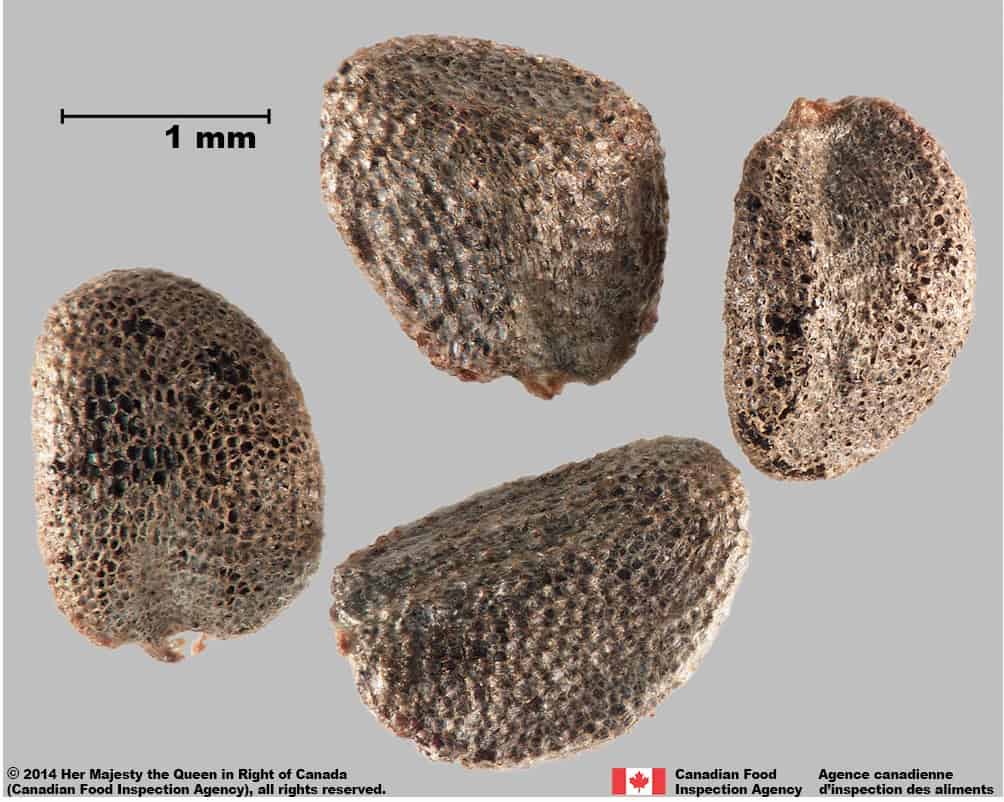
Early yellow rocket (winter cress) (Barbarea verna) seeds

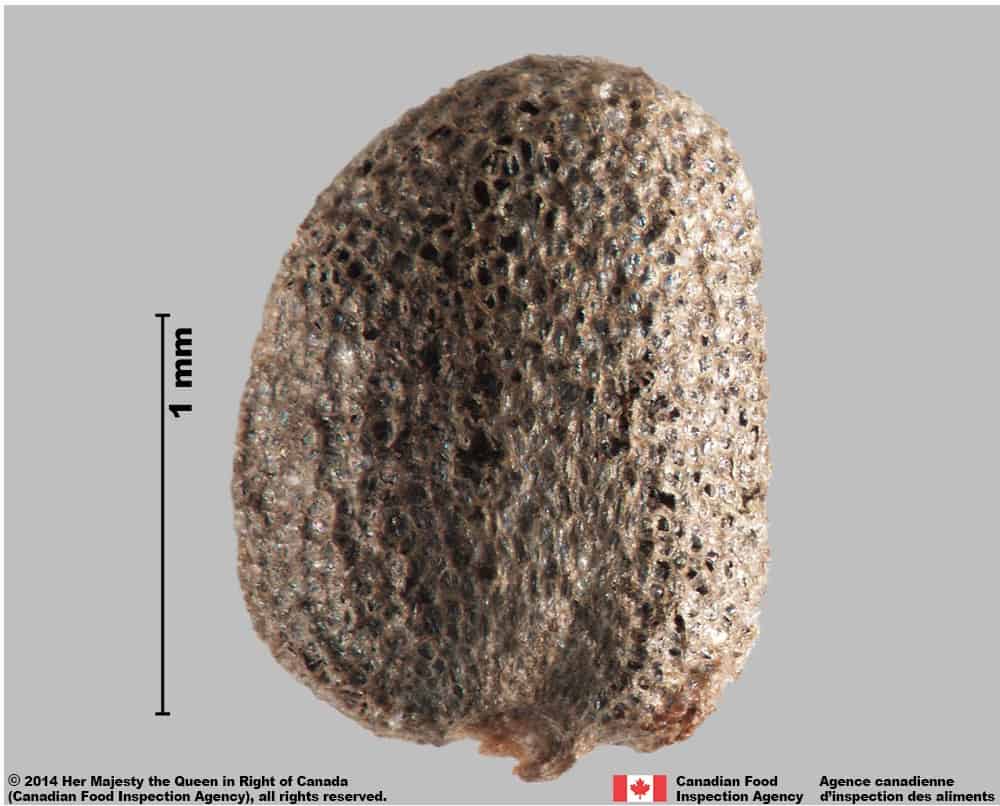
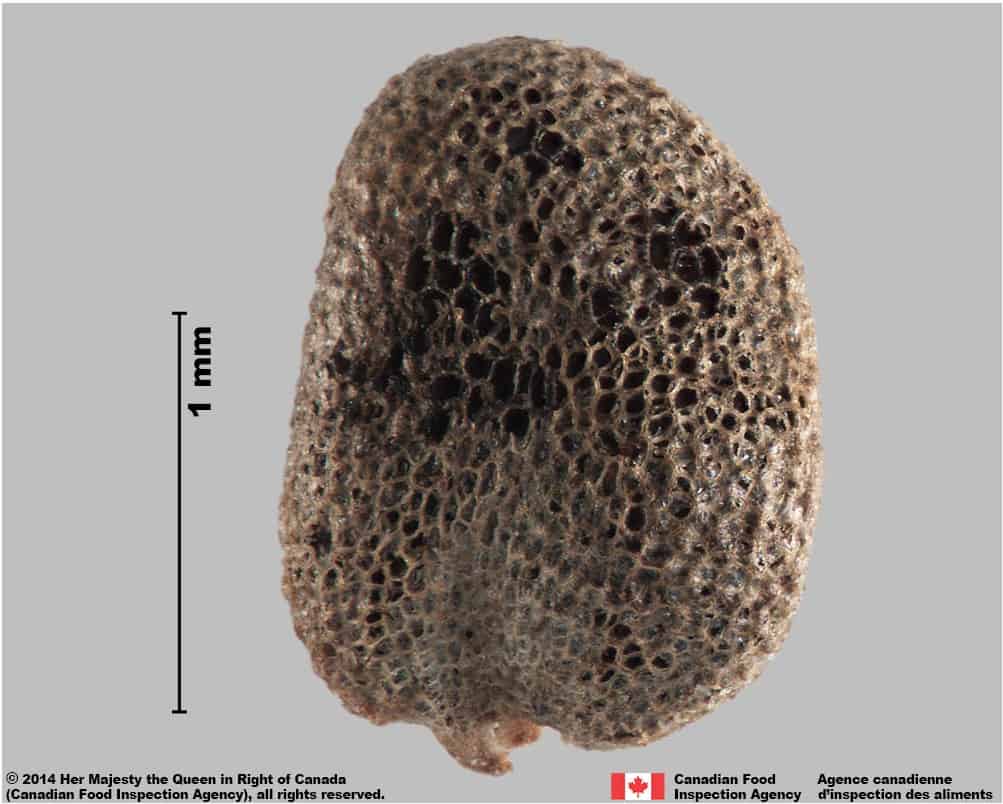
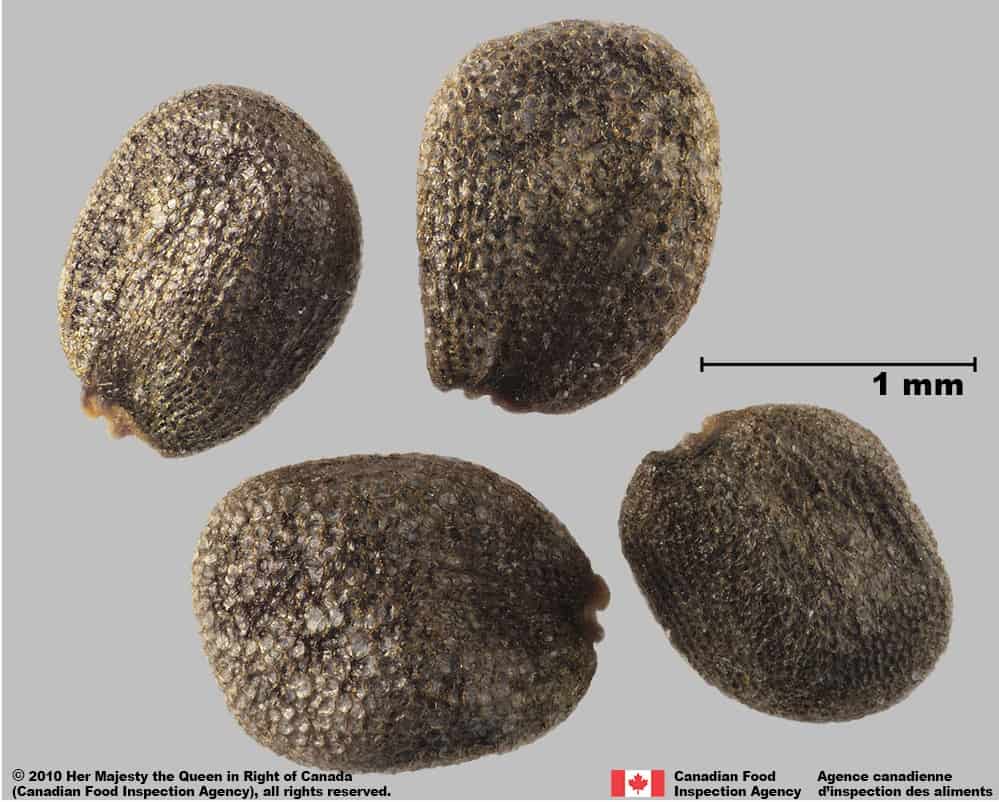
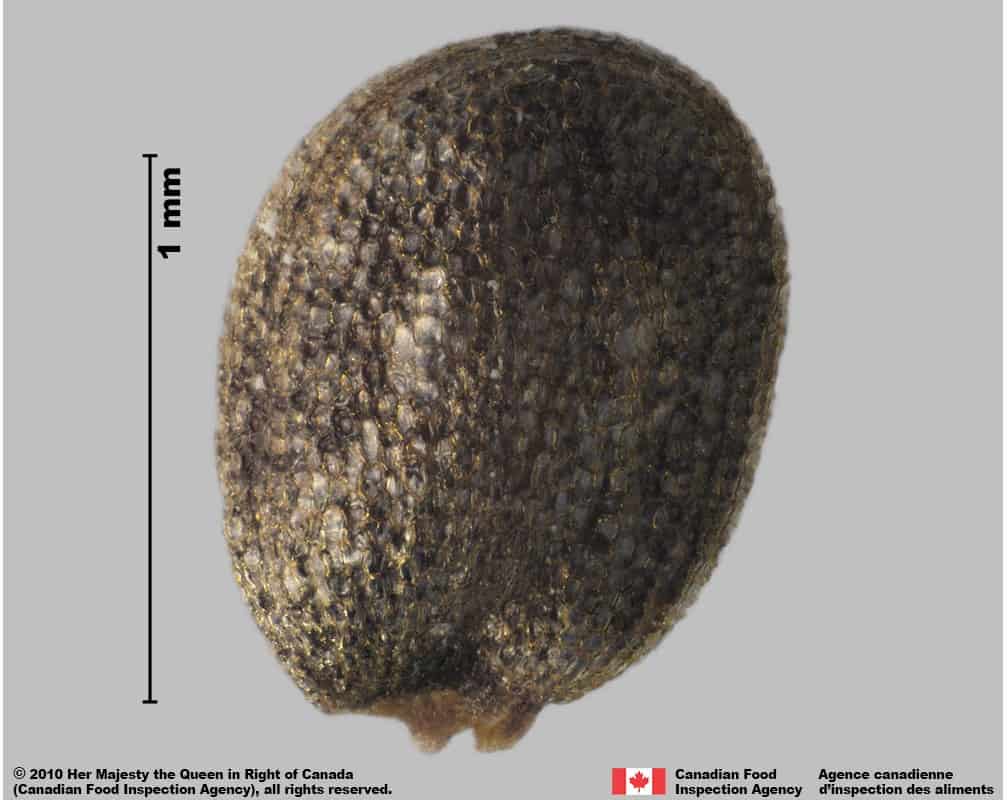
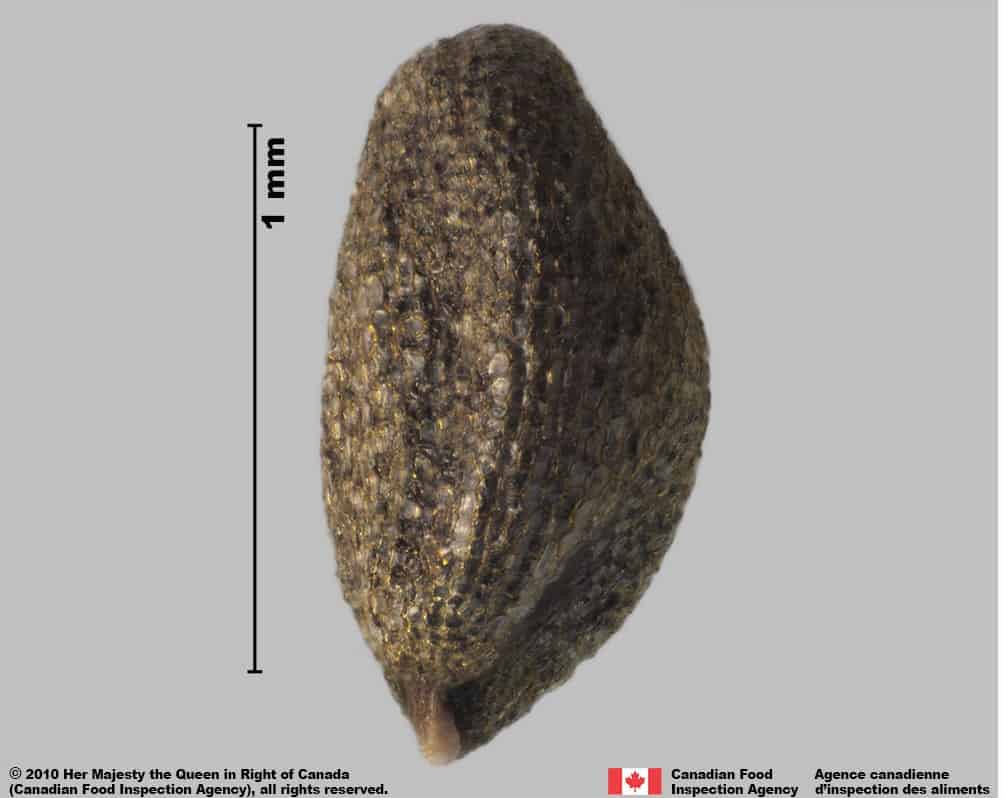
-
Embryo
Size
- Embryo fills the seed
Shape
- Embryo is bent
Endosperm
- Endosperm is lacking, nutritive tissue contained within cotyledons
Other Features
- Cotyledons are orange coloured, soft and oily with a stippled surface
Identification Tips
CONSEILS POUR L’IDENTIFICATION
Seeds of Barbarea species are medium-sized within the Brassicaceae, a similar size as Brassica species. Seeds can be distinguished from genera with a similar oblong shape, radicle furrow and ridged reticulations such as Descurainia species and Sisymbrium species by:
- The dark grey-brown colour of Barbarea species seeds
- Ridged reticulation with deeply concave interspaces
- Shiny, yellowish film on the surface
- Seeds not sticky when wetted (FNA 1993+)

Early yellow rocket (winter cress) (Barbarea verna) seeds






Additional Botany Information
AUTRES RENSEIGNEMENTS BOTANIQUES
Similar Species
ESPÈCES SEMBLABLES
Similar species are based on a study of seed morphology of various species, and those with similar dispersal units are identified. The study is limited by physical specimen and literature availability at the time of examination, and possibly impacted by the subjectivity of the authors based on their knowledge and experience. Providing similar species information for seed identification is to make users aware of similarities that could possibly result in misidentification.
Berteroa incana (L.) DC (hoary alyssum)
B. incana seeds are generally wider than Barbarea species seeds (length*:1.2 – 2.2 mm; width: 0.9 – 1.8 mm), round or oval shaped with a wing around the outside, shiny dark reddish brown coloured and a ridged reticulate surface with smaller and shallow concave interspaces.
*Note: minimum and maximum of 20 seeds in a normal range of this species using image measurement (ISMA 2020)
Click to select species
Cliquez pour sélectionner les espèces
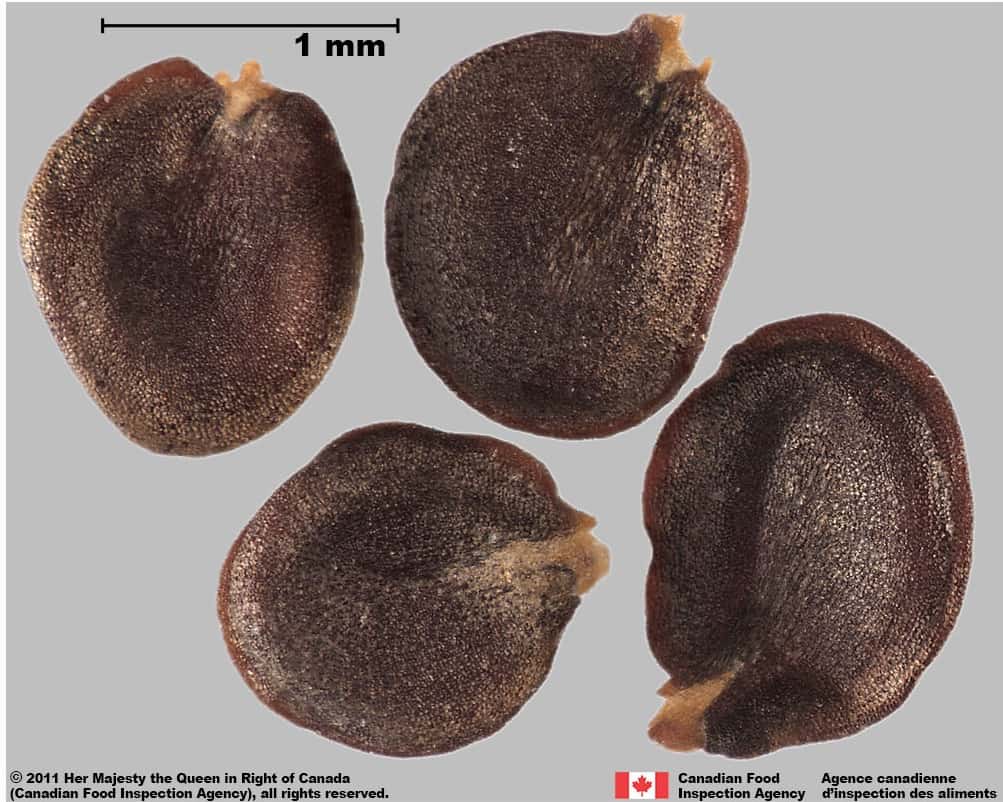
Berteroa incana
Comparison Window
Fenêtre de comparaison
MAIN SPECIES
ESPÈCES PRINCIPALES
Barbarea

Barbarea
Brassicaceae
Early yellow rocket (winter cress) (Barbarea verna) seeds
MAIN SPECIES
ESPÈCES PRINCIPALES
Barbarea

Barbarea
Brassicaceae
Early yellow rocket (winter cress) (Barbarea verna) seed
MAIN SPECIES
ESPÈCES PRINCIPALES
Barbarea

Barbarea
Brassicaceae
Early yellow rocket (winter cress) (Barbarea verna) seed
MAIN SPECIES
ESPÈCES PRINCIPALES
Barbarea

Barbarea
Brassicaceae
Yellow rocket (winter cress) (Barbarea vulgaris) seeds
MAIN SPECIES
ESPÈCES PRINCIPALES
Barbarea

Barbarea
Brassicaceae
Yellow rocket (winter cress) (Barbarea vulgaris) seed
MAIN SPECIES
ESPÈCES PRINCIPALES
Barbarea

Barbarea
Brassicaceae
Yellow rocket (winter cress) (Barbarea vulgaris) seed, side view
SIMILAR SPECIES
ESPÈCES SEMBLABLES
Berteroa incana

Berteroa incana
Brassicaceae
Hoary alyssum (Berteroa incana) seeds
SIMILAR SPECIES
ESPÈCES SEMBLABLES
Berteroa incana
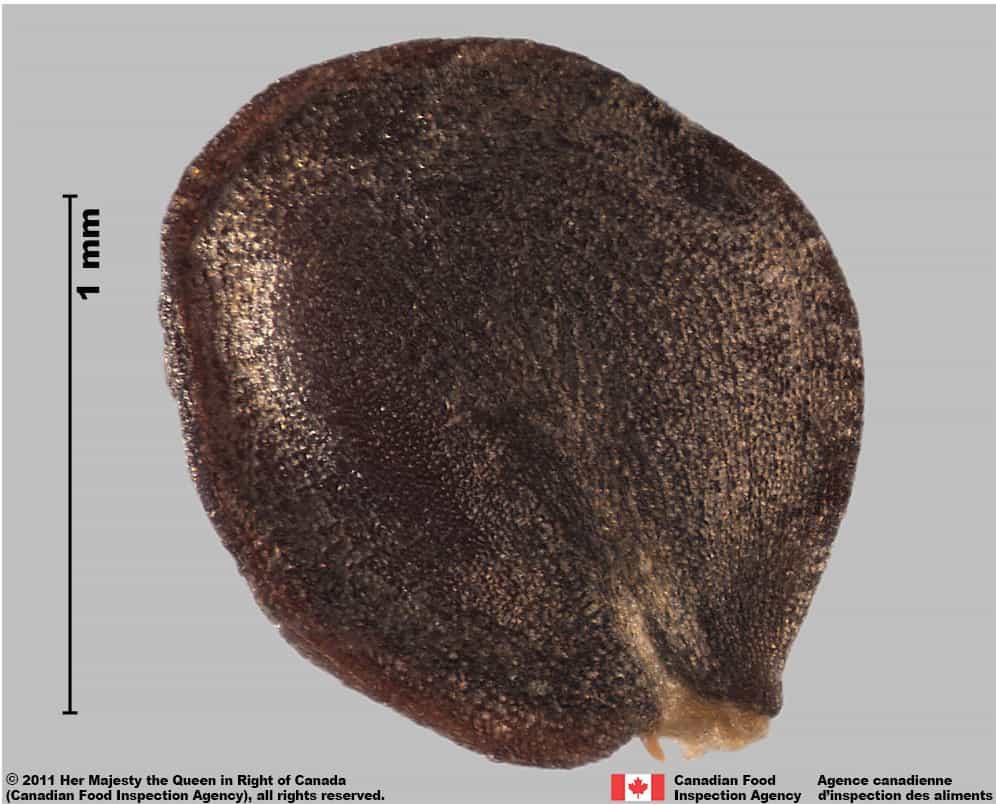
Berteroa incana
Brassicaceae
Hoary alyssum (Berteroa incana) seed
SIMILAR SPECIES
ESPÈCES SEMBLABLES
Berteroa incana
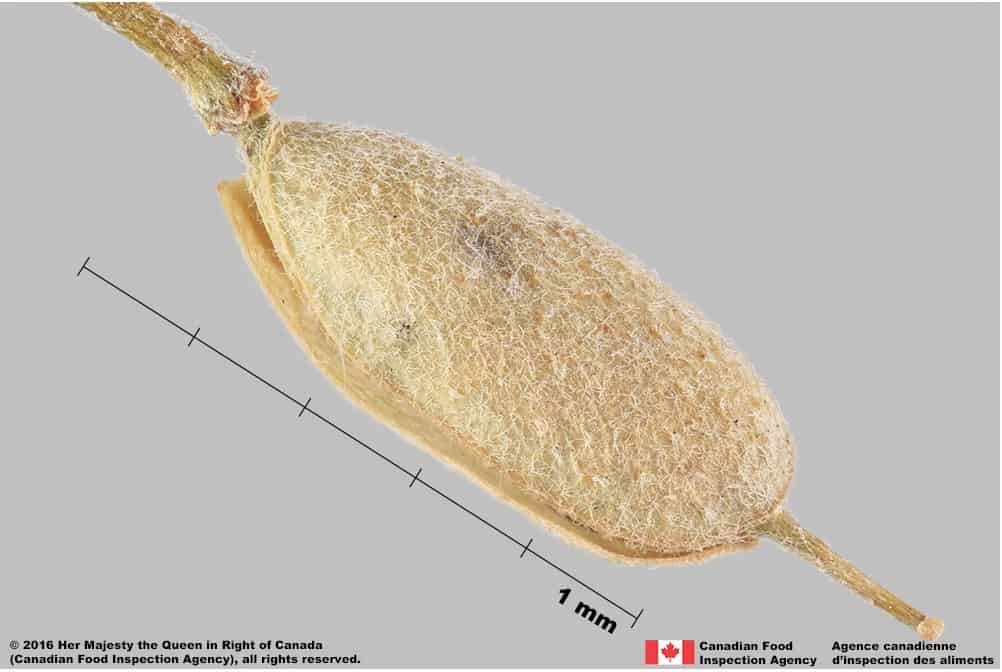
Berteroa incana
Brassicaceae
Hoary alyssum (Berteroa incana) pod
SIMILAR SPECIES
ESPÈCES SEMBLABLES
Berteroa incana
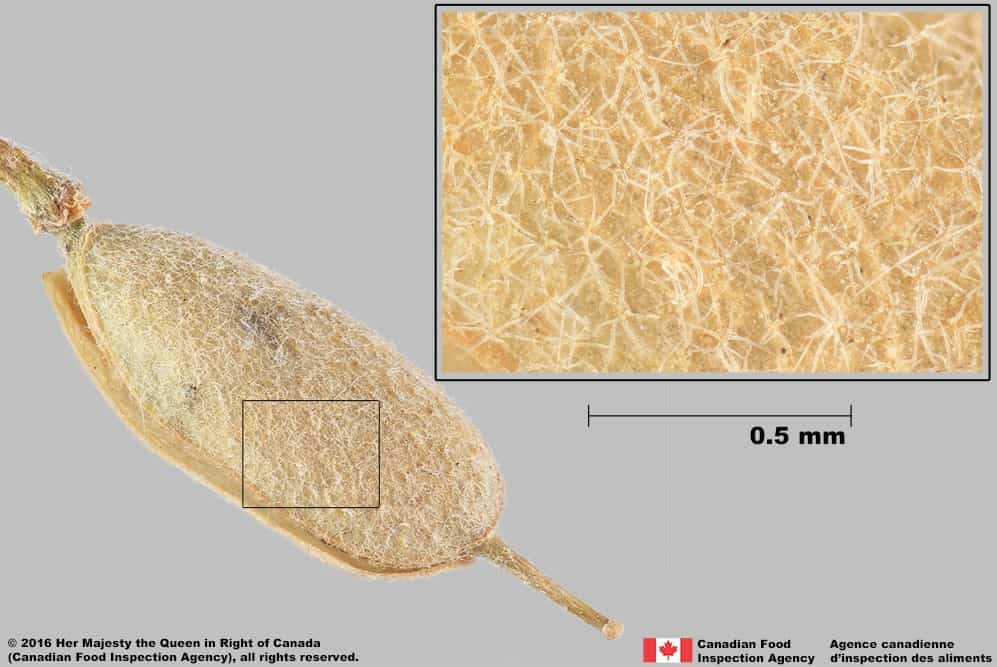
Berteroa incana
Brassicaceae
Hoary alyssum (Berteroa incana) pod surface
Need ID Help?
Besoin d’aide pour l’identification?
Reference(s)
Référence(s)
Agerbirk, N., Ørgaard, M. and Nielsen, J. K. 2003. Glucosinolates, flea beetle resistance, and leaf pubescence as taxonomic characters in the genus Barbarea (Brassicaceae). Phytochemistry 63 (1): 69-80.
Brouillet, L., Coursol, F., Meades, S. J., Favreau, M., Anions, M., Bélisle, P. and Desmet, P. 2010+. VASCAN, the database of vascular plants of Canada. http://data.canadensys.net/vascan/ Accessed April 26, 2021.
Darbyshire, S. J. 2003. Inventory of Canadian Agricultural Weeds. Agriculture and Agri-Food Canada, Research Branch. Ottawa, ON.
Flora of North America (FNA) Editorial Committee, eds. 1993+. Flora of North America North of Mexico [Online]. 22+ vols. New York and Oxford. http://beta.floranorthamerica.org. Accessed December 20, 2021.
Global Biodiversity Information Facility (GBIF) Secretariat. 2022. https://doi.org/10.15468/39omei Accessed via https://www.gbif.org/species/8370997 Accessed December 29, 2022.
Government of Canada (GC). 2016. Canadian Weed Seeds Order. https://laws-lois.justice.gc.ca/eng/regulations/SOR-2016-93/page-2.html (English) https://laws-lois.justice.gc.ca/fra/reglements/DORS-2016-93/page-2.html (French)
International Seed Morphology Association (ISMA) 2020. Method for Seed Size Measurement. Version 1.0. ISMA Publication Guide. https://www.idseed.org/authors/details/method_for_seed_size_measurement.html
MacDonald, M. A. and Cavers, P. B. 1991. The biology of Canadian weeds. 97. Barbarea vulgaris R. Br. Canadian Journal of Plant Science 71: 149-166.
U.S. Department of Agriculture-Natural Resources Conservation Service (USDA-NRCS). 2022. The PLANTS Database. National Plant Data Team, Greensboro, NC USA. http://plants.usda.gov Accessed December 29, 2022.



